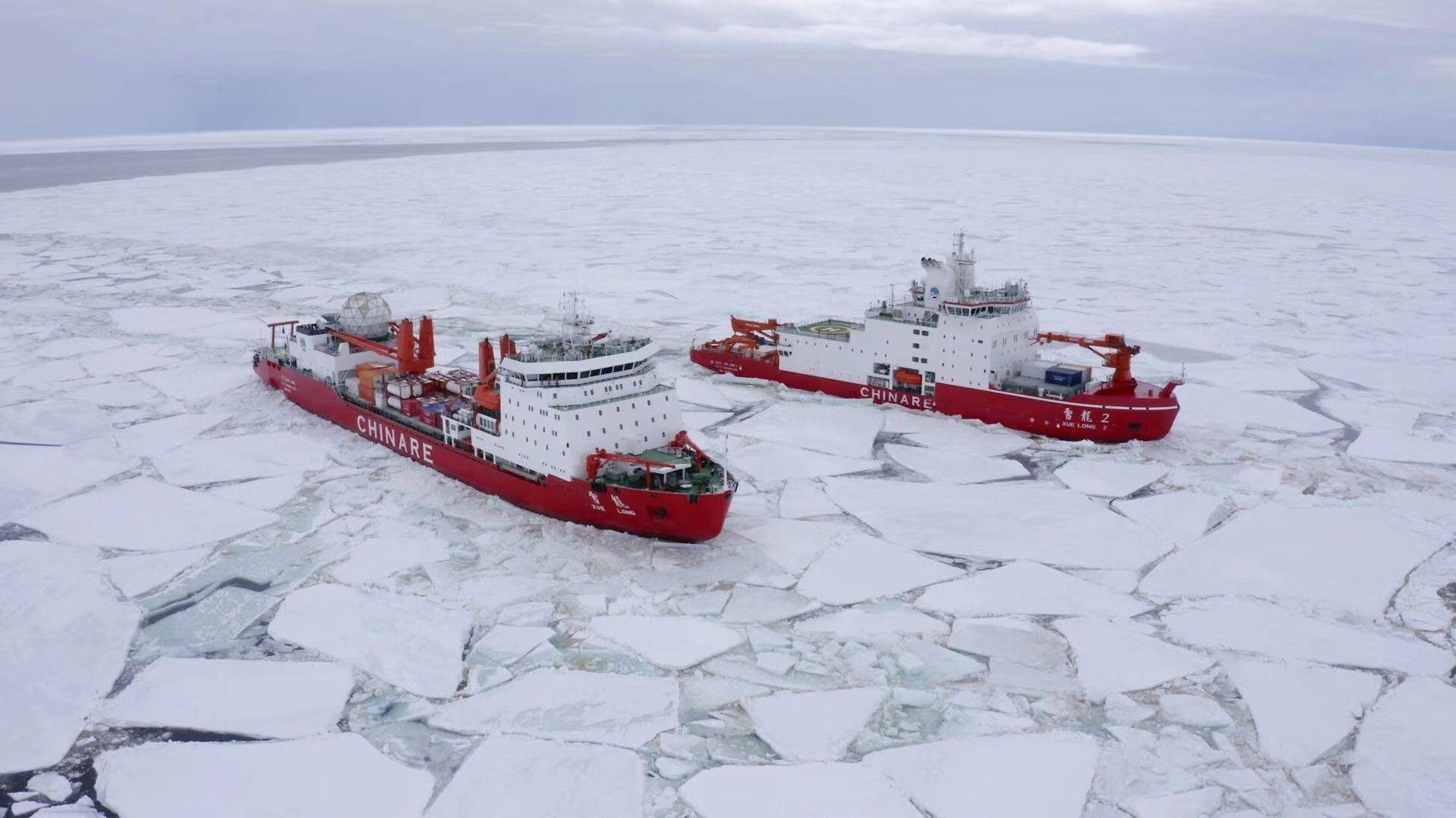
Picture a globe turned upside down so you see Antarctica at the top of the world. The continent’s immense strategic value is striking. Global resource pressures, coupled with advances in technology, continue to generate a deep strategic interest in Antarctica, and that interest will only continue to escalate.
Antarctica is enticing, especially for powers seeking to future-proof their resources, participate in global governance and enhance their scientific prestige.
Antarctica ticks all those boxes for China. The Antarctic Treaty (AT) prohibits military activity and establishes Antarctica as a zone of international cooperation for scientific research. But the AT alone, without being an Australian foreign and security priority, is not holding Beijing’s ambitions at bay, including those against Australia’s interests.
Antarctica is too often forgotten or not included in the strategic debate. It should be included—to determine whether Beijing’s behaviour is merely assertive or crossing into aggressive, as it is elsewhere. The answer, and simultaneously the problem, is that, when it comes to Antarctica, Beijing is not technically breaking the agreed rules by which the continent is managed, but it is undermining them and, therefore, Australia’s interests.
Indeed, according to the rulebooks (the AT System) facilitating activity in Antarctica, China is not overtly in breach of AT agreements. Rather, Beijing can work the AT System effectively to undermine the status quo and, with it, a vital strategic interest for Australia. It’s doing that in multiple ways, including through its domestic industrial policy, which has fused its civil and military sectors and is, at the very least, against the spirit of the AT’s prohibition of military activity, if not wholly inconsistent with it. Just because Beijing is not yet undertaking military activity in Antarctica doesn’t mean it’s not using the access Australia and others are giving it for military purposes. Regardless of whether it’s inconsistent with the AT System or merely a breach of the system’s spirit, it’s no longer business as usual in Antarctica. Australia must act to prevent further changes to the status quo.
As a start, Australia needs to act like the Antarctica claimant we are and ensure that it’s better understood that China has no claim and is only on the continent because of our—and other claimants’—cooperation. With so many different domestic, regional and global priorities, it’s understandable that Antarctica isn’t considered a top priority, but the strategic Antarctic vacuum being left by Australia is being filled by Beijing, which continues to show that it can handle multiple strategic priorities at once. A reluctance to incorporate Antarctica into our strategic discourse means a lack of understanding of the continent’s geostrategic importance.
Australia and like-minded partners should develop a toolkit to adequately counter and mitigate China’s erosive efforts to rewrite Antarctica’s future. Capabilities are a critical component of any toolkit, as they ensure the ability to monitor Beijing’s Antarctic activity adequately. Investment in polar capabilities and the sustainment of physical presence through revitalised Antarctic research bases and a competitive scientific research agenda are priority areas of action.
Diplomacy is a vital requirement of our Antarctic toolkit. Simply put, the continuance of the status quo in Antarctica is a shared interest for all parties. Without checks and balances, Beijing will continue to use the existing rules and a lack of interest from nations such as Australia to change it. Australia must work to remind Beijing (both privately in detail and in public to ensure the Australian public is aware of the issue and priority) of the Antarctic spirit and obligations of the AT. A delicate balancing strategy is needed to bolster the status quo facilitated by the treaty and to establish a robust ability to push back against growing Chinese power in Antarctica. While there’s unlikely to be (armed) conflict in Antarctica, make no mistake: Australia’s Antarctic interests and the Antarctic status quo are squarely under threat.
Both Australia and China have legitimate vested national interests in Antarctica. While Canberra has a sovereign territorial claim to protect and a close geostrategic flank to manage, Beijing’s designs aren’t difficult to grasp when it comes to Antarctica. Besides what China tells us it seeks to do with Antarctica, its long-term ambitions relate to the future development of Antarctic resources (living and non-living).
A new ASPI report provides actionable policy recommendations for the Australian government. Most pressing is the need for the prime minister and cabinet to undertake a net-assessment stocktake of existing Australia–China Antarctic funding and research by 2025. That stocktake should cover the number of Antarctic and Southern Ocean postgraduate scholarships or PhD research projects over the past decade that Australian taxpayers have funded. It should also underline where the intellectual property and expertise remains in Australia and consider the long-term implications of those research partnerships by cross-referencing Chinese partners with the US sanctioned entities list.
Only then will we truly grasp how much Australia is continuing to fund and support Beijing’s Antarctic strategic edge.